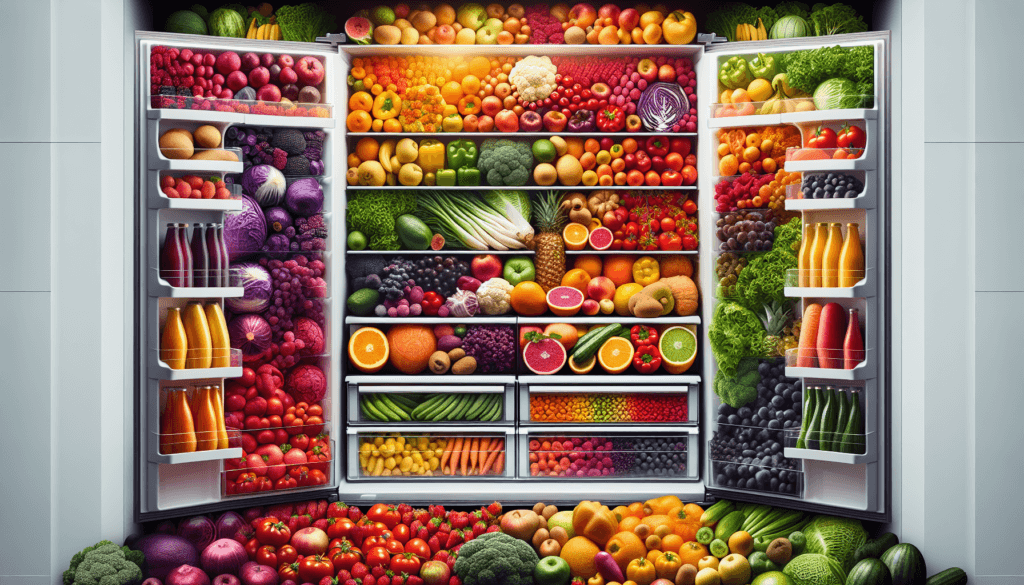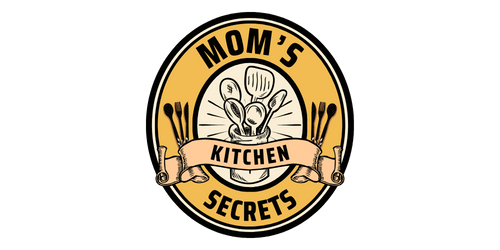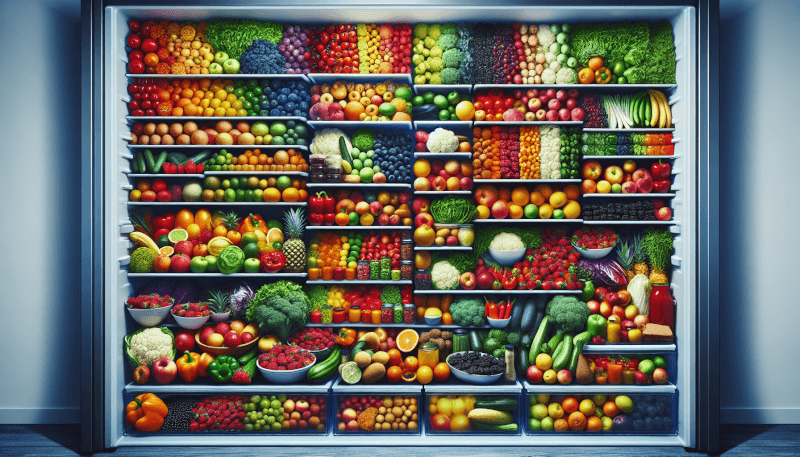Having a well-organized refrigerator not only makes it easier to find what you need but also helps prolong the freshness of your food. In this article, you will discover some of the best ways to organize your refrigerator, from arranging shelves and door compartments to utilizing storage bins and labels. With these simple yet effective tips, you’ll be able to maximize the space in your fridge and ensure that everything is stored efficiently and within reach. Say goodbye to digging through a cluttered fridge and hello to a more organized and stress-free kitchen experience.
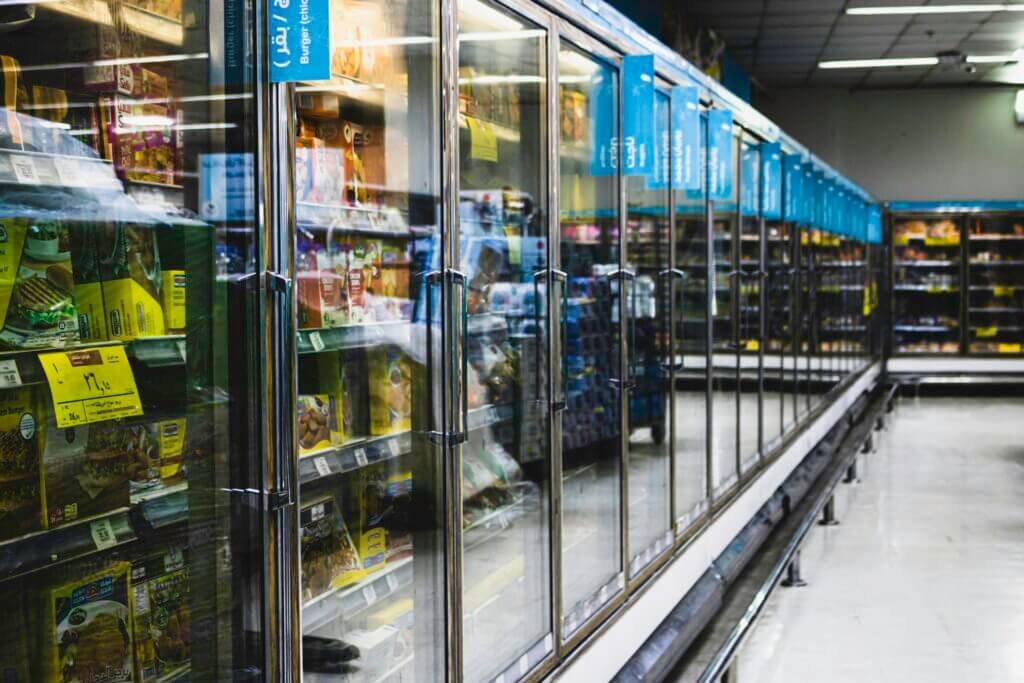
1. Categorize and Group Items
Having an organized refrigerator can make your life so much easier. One of the first steps in achieving this is to categorize and group your items. By sorting your food based on their type, you can easily locate what you need and avoid the hassle of searching through the entire fridge. Start by emptying out your refrigerator and categorize your items into groups such as dairy, meat, fruits, vegetables, condiments, and beverages.
1.1 Sort by Food Type
Once you have grouped your items, designate specific areas in your fridge for each category. For example, allocate a shelf for your dairy products, another for meat and poultry, and a separate section for fruits and vegetables. This way, you can easily find what you need without having to search through different areas of your refrigerator.
1.2 Use Dedicated Storage Containers
Investing in dedicated storage containers can help streamline the organization process even further. Use clear, airtight containers to store leftovers, sliced fruits, and vegetables, or any other items that may be prone to spills. These containers not only keep your fridge tidy but also preserve the freshness of your food.
1.3 Keep Similar Items Together
To make your refrigerator even more organized, consider keeping similar items together. For instance, store all your condiments in one designated area so you won’t have to dig through various shelves to find the barbecue sauce or mustard. Keeping similar items grouped can save you time and effort when you’re preparing meals.
2. Optimize Temperature Zones
Understanding the different temperature zones in your refrigerator is crucial to ensure your food stays fresh for longer periods. Different zones within the refrigerator have varying temperature ranges, and knowing where to store certain items can extend their shelf life.
2.1 Understand Temperature Zones
Most refrigerators have different temperature zones, typically ranging from 32°F (0°C) to 40°F (4°C) for the main compartment, and below freezing temperatures for the freezer. The coldest spots in the fridge are at the back and bottom, while the door shelves are the warmest due to frequent temperature fluctuations.
2.2 Arrange Accordingly
To optimize your refrigerator’s temperature zones, it is important to arrange your items accordingly. Keep perishable items, such as raw meat and fish, in the coldest parts of the fridge, such as the bottom shelf. Store items that require consistent temperatures, like dairy products and eggs, in the middle or top shelves where the temperature is more stable.
2.3 Use Crisper Drawers Effectively
Crisper drawers are designed to help maintain optimal humidity levels for fruits and vegetables. Use these drawers to store your produce and adjust the humidity settings if your fridge allows it. By keeping your fruits and vegetables in the crisper drawers, you can extend their shelf life and prevent them from wilting or spoiling prematurely.
3. Maximize Shelf Space
With limited shelf space in your refrigerator, it is essential to make the most of what you have. Here are some tips to help you maximize your fridge’s shelf space.
3.1 Adjust Shelf Heights
Most refrigerators come with adjustable shelves that allow you to customize the space according to your needs. Take advantage of this feature by adjusting the heights of your shelves to accommodate taller items like cartons of milk or bottles of soda. By rearranging your shelves, you create more vertical room and maximize the available space.
3.2 Use Lazy Susans or Turntables
Lazy Susans or turntables are great tools for organizing your fridge shelves efficiently. These rotating platforms allow you to access items stored at the back of the shelf without having to move everything in front. Use a lazy Susan to store condiments, jars, or small bottles. With a simple spin, you can easily find what you’re looking for.
3.3 Utilize Fridge Organizers
Investing in fridge organizers can be a game-changer when it comes to maximizing your shelf space. Fridge organizers come in various sizes and designs, offering compartments and bins that can neatly hold items like cans, jars, or even eggs. By using these organizers, you can eliminate clutter and create more space for other food items.
4. Prevent Food Waste
Preventing food waste is not only good for your wallet but also for the environment. By organizing your refrigerator effectively, you can reduce the risk of forgetting about items and ensure that perishables are consumed before they spoil.
4.1 Prioritize Perishables
When organizing your fridge, it’s essential to prioritize perishable items. Place these items at eye level or in a dedicated section to remind yourself to use them before they go bad. This will help minimize food waste and encourage you to incorporate these perishables into your meals.
4.2 Label and Date Items
To keep track of when certain items were purchased or prepared, it’s helpful to label and date your food containers. Use labels or stickers to indicate the date of preparation or expiration for items like leftovers or homemade sauces. This way, you can easily identify items that need to be consumed first to avoid spoilage.
4.3 Have a Leftovers Section
Designate a specific area in your refrigerator for leftovers. This not only keeps them visible but also reminds you to consume them promptly. Place them in clear containers and stack them neatly to save space. Having a designated leftovers section helps you keep track of what needs to be eaten first and reduces the chances of forgotten leftovers.

5. Proper Storage for Fruits and Vegetables
Properly storing fruits and vegetables helps maintain their freshness and extends their shelf life. Here are some tips to store your produce effectively.
5.1 Separate Ethylene-Producing and Ethylene-Sensitive Produce
Certain fruits and vegetables produce a naturally occurring gas called ethylene, which can accelerate ripening and deterioration in ethylene-sensitive produce. To prevent premature spoilage, store ethylene-producing fruits like apples, bananas, and tomatoes separately from ethylene-sensitive produce like leafy greens, berries, and cucumbers.
5.2 Wrap and Store Greens
Leafy greens are prone to wilting if not stored properly. After washing and drying your greens, wrap them in paper towels or use breathable produce bags to absorb excess moisture. Place them in the crisper drawer of your refrigerator to maintain freshness.
5.3 Set Humidity Levels
Different produce items have varying humidity requirements. Some fruits prefer higher humidity, while others prefer lower levels. Many refrigerators have humidity control settings for crisper drawers. Adjust the humidity settings accordingly to keep your fruits and vegetables fresh for longer periods. High humidity preserves crispness, while low humidity prevents moisture accumulation.
6. Organize Door Shelves Efficiently
The door shelves on your refrigerator provide a convenient storage space but are not suitable for all types of items. Prioritize the items you store in the door to ensure their safety and longevity.
6.1 Know What to Store in the Door
The door shelves are exposed to frequent temperature fluctuations, making them less suitable for perishable items. Store condiments, sauces, and beverages in the door shelves since they are less prone to spoilage. Avoid storing eggs, milk, or other temperature-sensitive items in this area.
6.2 Use Clear Bins for Small Items
Clear bins or small containers can help keep your door shelves organized. Use these bins to corral small items like individual yogurt cups, small jars of pickles, or tubes of tomato paste. By placing these items in clear bins, you can easily see what you have at a glance and prevent them from rolling around or getting lost in the depths of the door shelves.
6.3 Arrange Condiments and Sauces
Arrange your condiments and sauces in a logical manner. Group similar items together, such as ketchup, mustard, and mayonnaise. This way, you can quickly find the condiment you need without having to search through a jumble of bottles. Consider using a tiered organizer or lazy Susan to maximize space and accessibility.
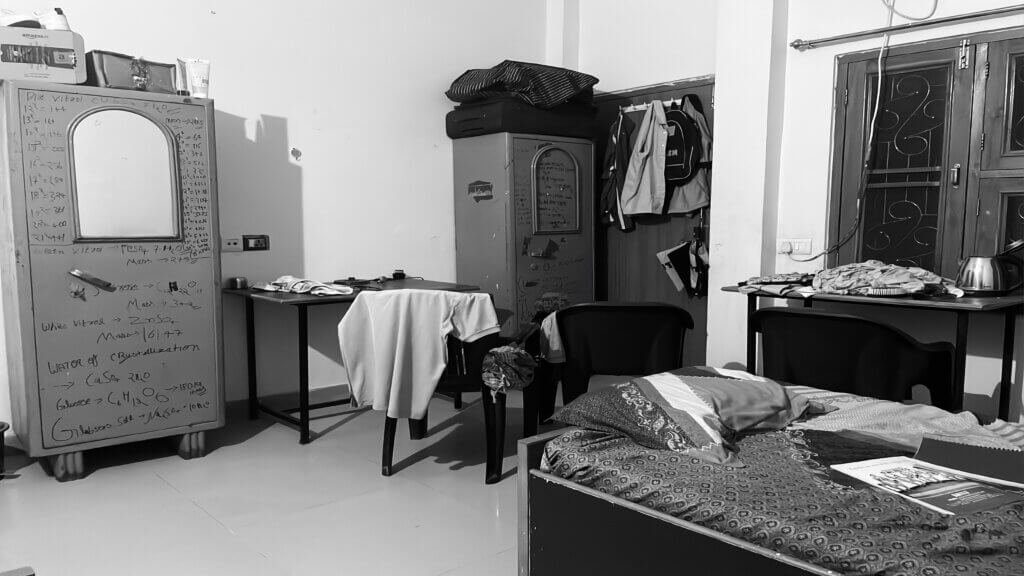
7. Maintain Food Safety
Maintaining food safety in your refrigerator is crucial to prevent foodborne illnesses. Follow these tips to ensure your food stays safe to consume.
7.1 Regularly Clean the Fridge
Regular cleaning of your refrigerator helps eliminate bacteria and food residue. Remove all items from your fridge and wipe down the shelves, drawers, and door seals using a mild detergent or a mixture of vinegar and water. Don’t forget to clean the drip tray and the back of the fridge. Regular cleaning not only prevents odors but also reduces the risk of cross-contamination.
7.2 Follow Storage Guidelines
Different food items have specific storage recommendations to maintain their quality and safety. Familiarize yourself with these guidelines to ensure your food stays fresh and safe to eat. Keep raw meats and seafood separate from other items, and always store cooked foods in sealed containers to avoid contamination.
7.3 Check Expiration Dates
Regularly check the expiration dates of the items in your refrigerator. Rotate older items to the front so that they are used before newer ones. This practice helps you avoid consuming expired food and ensures that items with shorter shelf lives are consumed in a timely manner.
8. Store Leftovers Properly
Leftovers can be a delicious and convenient option for meals, but improper storage can lead to spoilage or foodborne illnesses. Here’s how to store your leftovers properly.
8.1 Cool and Label Leftovers
To store your leftovers, allow them to cool completely before transferring them to airtight containers. Label the containers with the contents and the date of preparation to keep track of their freshness. It’s best to refrigerate leftovers within two hours of cooking to prevent bacterial growth.
8.2 Use Airtight Containers
Using airtight containers is crucial for preserving the taste and quality of your leftovers. The airtight seal prevents moisture and odors from escaping, maintaining the freshness of your food for longer. Glass or plastic containers with tight-fitting lids work well for storing leftovers in the refrigerator.
8.3 Keep a Leftovers Inventory
Keeping an inventory of your leftovers can help you plan meals and reduce waste. Keep a list or use a whiteboard on your refrigerator door to track the types of leftovers you have and their expiration dates. This way, you can easily incorporate them into future meals before they spoil.
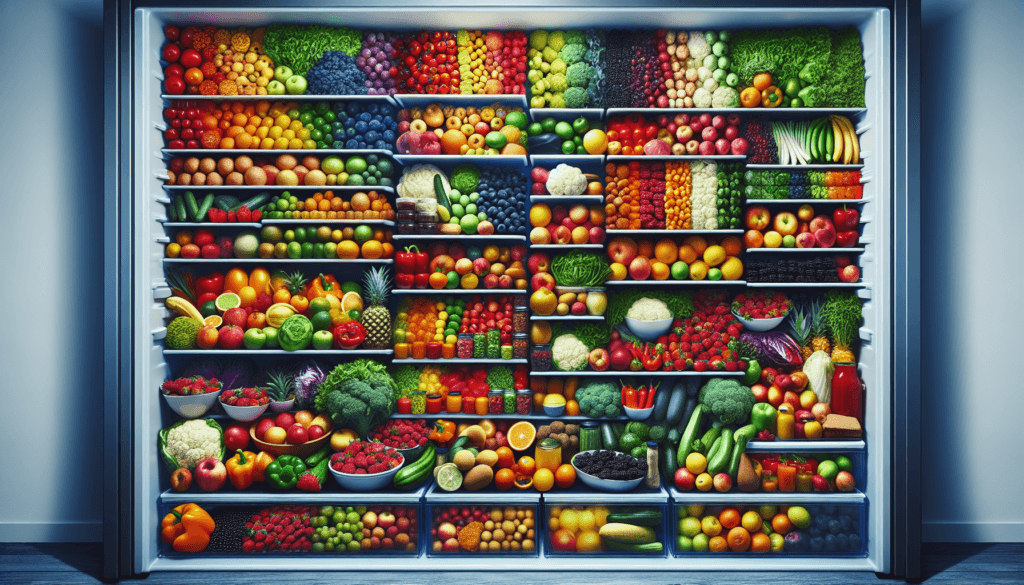
9. Organize Freezer Space
An organized freezer not only makes it easier to find what you need but also helps prevent freezer burn and food waste. Here’s how to optimize your freezer space.
9.1 Use Freezer Bins or Baskets
Invest in freezer bins or baskets to compartmentalize your frozen items. Categorize your items, such as meat, vegetables, or prepared meals, and store them in separate containers. This makes it easier to locate specific items without having to dig through a pile of frozen goods.
9.2 Label and Date Frozen Items
Properly labeling and dating your frozen items can help you identify and use them before they lose their quality. Use freezer-safe labels or write directly on the packaging to indicate the contents and the date of freezing. This practice ensures that you prioritize older items and reduces the risk of freezer-burned or forgotten food.
9.3 Implement the FIFO Method
FIFO, which stands for “First In, First Out,” is a useful method to prevent food from being forgotten and wasted in your freezer. Implement this method by placing newly purchased or prepared items behind older ones. As a result, you will naturally use the older items first, ensuring that nothing gets lost in the depths of your freezer.
10. Tips for Seasonal Storage
Seasonal storage requires careful organization to efficiently accommodate the influx or change in food items. Here are some tips to help you store seasonal items effectively.
10.1 Rotate Seasonal Items
As the seasons change, rotate your refrigerator and freezer contents accordingly. Move out-of-season items to the back or lower shelves of your fridge to make space for fresh produce or holiday ingredients. By keeping the most relevant items within easy reach, you can avoid clutter and ensure efficiency.
10.2 Make Use of Extra Space
Seasonal storage often involves a higher volume of food items. Look for any unused space in your refrigerator, such as the top shelf or the back of the door, to store additional items. Utilize stackable containers or collapsible organizers to maximize any available spaces.
10.3 Place Holiday Leftovers Strategically
During holiday seasons, leftovers tend to accumulate quickly. Designate a specific area in your refrigerator for holiday leftovers, separate from your regular leftovers section. Keep the holiday leftovers visible and easily accessible to remind yourself to use them first before they go bad.
By following these tips and implementing proper organization techniques, you can transform your refrigerator from a cluttered mess into an efficient and functional storage space. Enjoy the benefits of an organized fridge, such as reduced food waste, extended freshness, and effortless meal preparation. Cheers to a perfectly organized refrigerator!
